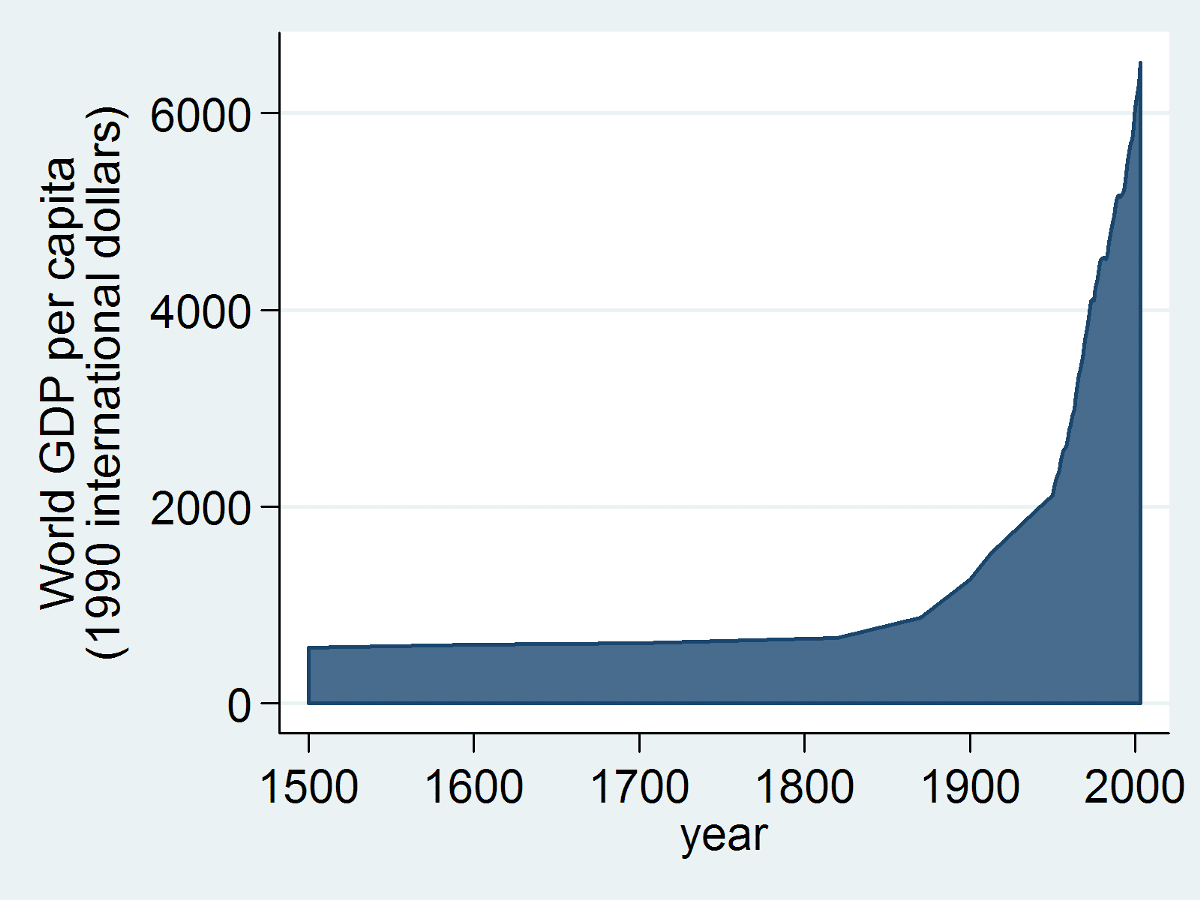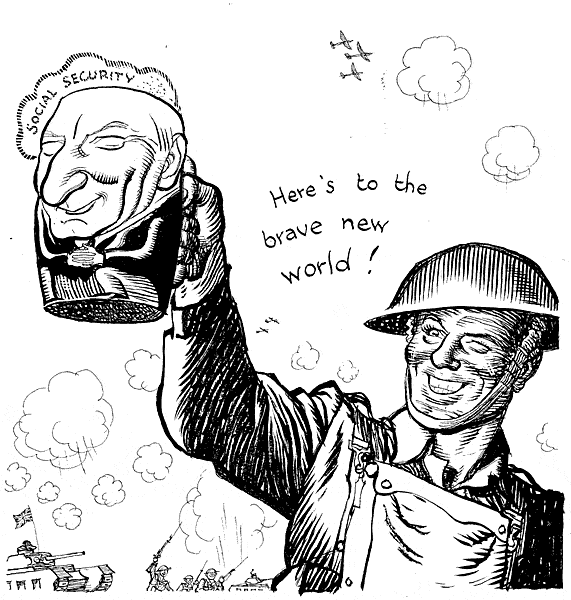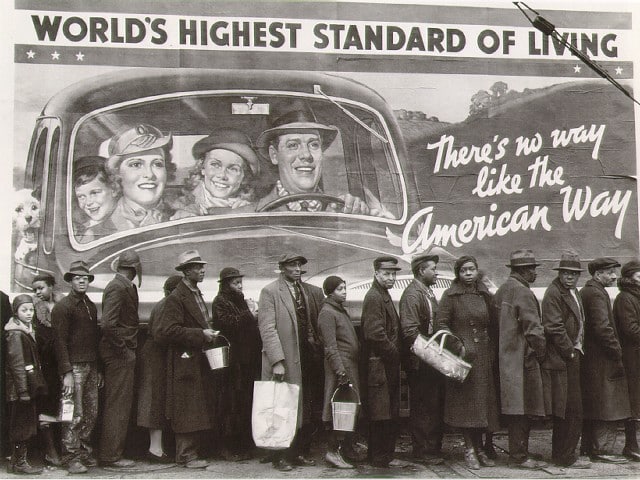 Article written by: Jordan Greenhall
Article written by: Jordan Greenhall
Our global civilization is currently undergoing a tremendous set of transitions that will ultimately result in the dismantling of much of the way that we currently live and the construction of a new “civilization model”. Over the next several months, I will be laying out many of the major challenges that we will face during this transition and propose solutions. I will then outline a practical plan that could enable us to actively make that transition in an elegant bottoms-up fashion (i.e. without requiring any willing participation from existing social and political institutions).
A very good way of framing the transition is a movement from a social system that is fundamentally organized around solving the problems of “scarcity” to a social system that is fundamentally organized around solving the problems of “abundance”. In this essay, I will discuss that transition and introduce some of the more important aspects of scarcity and abundance.
In many ways, our various political and economic systems over the millennia have been a response to the problem of allocating scarce resources — determining who is affluent and who is impoverished. For the long history of our current system — really up until the middle of the 19th Century, the idea that some would have and some would not was largely uncontroversial. It was a law of nature that someone was going to go hungry. The only question was who. The simple fact was that we didn’t consistently have enough (food, houses, cars, etc.) to go around. As a consequence, the only meaningful question was how we decided who got and who went without.
We’ve wandered through many different ways of making this decision over the centuries, and our current global neo-liberal capitalist system can be thought of as the “peak predator” of the scarcity jungle. Thus far, it has proven to be the most effective system of allocating scarce resources using a very simple logic: those who are most capable of producing scarce resources should be those who are rewarded with the largest share; and those who produce the least should be those who do without.

At its best, this is a ruthlessly efficient motivational scheme. Work hard, produce well and be rewarded with riches. Fail to contribute to the common wealth and be reduced to starvation and impoverishment. The genius of this approach is that it motivates productivity at the individual level. Each individual is empowered (and forced) to use their best efforts to produce the most wealth — for themselves and, as a consequence, for society. The system has, of course, been hacked, manipulated and abused over the years, but nonetheless this approach has been a core driver of the almost implausible wealth creation over the past three centuries.
But by the turn of the 20th Century in the Western world and the middle of the 20th Century in the world at large, important things started to shift. Many scarce resources began to become less scarce. By the early part of the 1900’s, the United States produced more than enough food for every American to have enough to eat. By the late 1960’s, the world produced enough food for everyone on the world to have enough to eat. Hunger was no longer a simple function of lack — it had become a function of our system. It had become a consequence of human choice rather than natural law.


This deep change in the state of affairs gave rise to one of the dominant political divides of the past 200 years. One side saw deep unfairness in a system that left some hungry when we had more than enough to feed them. This side argued for reform of the system to remove that injustice.
The other side argued that removing the very motivational architecture that had produced our vast wealth would fatally undermine the very system that gave it to us — leading to deprivation for everyone. If you can live well without working hard, why would anyone work hard?
The struggle over the shape and scope of the “Welfare State” has waggled back and forth over the two centuries. Social justice and equality or a rising tide lifting all boats? The answer is, of course, that both sides are correct. Our current system does result in substantial inequity. At the same time, removing the profit signal and carrot/stick motivation will break the machine that has enabled (and supported) the rise of the human population from 1 to 7 billion in 200 years. We’ve lurched through various efforts to get the best of both — but the deep contradiction has been unresolved.
We are now on the cusp of an actual resolution. We are currently undergoing a major transition from a world dominated by the forces of scarcity to a world dominated by the forces of abundance. This is a once in a thousand-year level (or larger) transition and must be understood in that context.
Abundance is not the same as “having a lot of stuff”. It stems from a different foundation entirely. Scarce resources are those things sometimes called “rivalrous” by economists. Rivalrous, as in, we can rival each-other for their possession. If I have it, you can’t and if I consume it, it is gone forever. Food, water, energy. This is an important category of existence, to be sure, and will continue to be so for as long as we don this mortal coil. But it is not the only category of existence — and in the late 20th Century it lost its billion year position as the most important.
Abundance is founded on something that might be called “anti-rivalrous.” If I have it, you can also have it without my losing it; and the more people who have it the more powerful and valuable it becomes. Language, math, music, ideas. Information. Abundance is not some sort of “bulked-up” scarcity, it is of a different order altogether and its logic requires a political and economic system that is altogether different from our current one.
The consequences of abundance are deep and broad. For this particular essay, I’ll raise a few and take a look at a very important model: when these challenges are looked at through the lens of scarcity, they are frightening. Our scarcity models can’t handle them and result in bad solutions (to put it mildly). But when we look at them through the lens of abundance, we can begin to craft very elegant solutions that radically simplify life and orient us to more and more abundance. Consider this as you contemplate the future: which side of the looking glass are you on?

Challenge 1: We are all going to be unemployed
The “automation of everything” has been discussed since the heyday of 50’s science fiction. Self-driving cars, fully automated factories, AI expert systems — the list of labor removing innovations that will be coming down the lane the next few decades is long and distinguished. The simple rule of our future: anything that can be done by a computer (or robot) will be done by a computer. And that means almost everything that currently employs human beings.
Recently, the idea has leapt from the pages of Asimov into conventional awareness. Somewhat astoundingly, the absurdly mainstream international real estate consulting firm CBRE partnered with the China-based property developer Genesis to repeat the theme in their report Fast Forward 2030: The Future of Work and the Workplace. They conclude:
50% of occupations in corporations today will no longer exist by 2025
Let that sink in. In a decade, 50% of occupations in corporations today will no longer exist. Yes, new jobs will be created to replace some of those lost. But 50%? In ten years? No matter how you slice it, historically unprecedented unemployment is going to be a major part of our future.
From the point of view of scarcity, this is a bad thing.
After all, it is the mandate of many of our social institutions to maximizeemployment — not the other way around! Unemployment in our current system is incredibly corrosive. At the individual level, fear, shame, disconnection and, ultimately, destitution. At the social level the economy chokes on plunging demand and slides into a downward spiral.
At the peak of the 2008 financial crisis, unemployment in the US reached upwards of 10% (higher depending on your preferred analysis). In crisis ravaged Greece, it peaked near 27% (with a youth unemployment rate exceeding 60%). It has required extraordinary measures on a global scale to barely keep our collective head above the water. No force currently known to the scarcity model is capable of dealing with a structural unemployment rate vaguely approaching what automation portends. Something novel will have to be done.
But what happens if we travel through the looking glass? Fear is the center of the scarcity mentality — and the freedom from fear is the great catalyst of the abundance mentality. When looked at from the point of view of abundance, automation represents the liberation of human activity from work. In a well structured abundance model, huge chunks of the population move from suffering from unemployment to enduring it to, ultimately, thriving in it. We can even adopt this as a design requirement of an abundance model: it must endeavour over time to reach full unemployment while continually increasing wealth. How? Lets continue walking down the path of challenges.
Wealth inequality in Brazil
Challenge 2: We don’t need everyone anymore
This sounds cruel, and within the scarcity mentality it is, but it is also true. It is the flip-side of increasing unemployment. The simple fact is that as machines replace human functions, we don’t need people to do those sorts of things any more. Simply put, in the not so distant future, we will be able to provide for our material needs with very little to no human labor. So, if we are measuring human value by their contribution to our common necessities, then we simply don’t need most of the people on the planet.
This can lead to some pretty nasty conclusions. Particularly given the winner take all wealth concentrating tendencies of the current model. The result is a form of “neo-feudalism” where there is a small elite of uber-wealthy and a mass of increasingly “irrelevant” humanity. The 1% vs. the 99%. Whether this ends up in a favela/ghetto future like the Hunger Games or Elysium, or the kinder-gentler slow death imagined by Marshall Brain in Manna, the result is the same: an ugly dehumanization of the great mass and potential of people.
Of course, it doesn’t have to be that way. In fact, the very notion that it couldbe is a reminder of the crucial role of mind-set. To the scarcity mentality, it makes sense that other people are disposable. After all, if every other person is a potential threat to my survival, then I need to protect myself. The deep recessess of the mind are far from rational. A fear-motivated scarcity mindset sees threat everywhere. No matter how rich and powerful you are, you are never at peace. It is really only through a psychology driven by this mindset that a future where humanity is freed from the necessity of labor could be dystopian.
The abundance mindset sees things differently. No longer controlled by survival instincts, the abundance mindset fundamentally sees other people as potential opportunities, rather than threats. As a consequence, the notion that we don’t “need” other people in order to survive becomes a beautiful relief. It means that the great conservative fear of the 19th and 20th Centuries is no longer relevant. People can become free to pursue their lives the way that they want to. And if only a fraction use their time to contribute to the common wealth, everything will be OK. In an abundance society, if 85% of the population does nothing, the system doesn’t skip a beat — because the innovative wealth created by the other 15% is more than enough.
How? What is it about the abundance model that allows it to so nimbly avoid the traps of the past?
The abundance model does this by moving from a focus on “productivity” to a focus on “innovation”. This is a deep point and will be the topic of an essay of its own, but the basic sense is this: a well designed abundance model will substantially increase our innovative generativity. And this will, in turn, deliver a tremendous increase in real wealth.
Some might worry, of course, that lacking the moral benefit of a carrot and a stick to prod them into productivity, humanity will slide into a sort of degraded insolence. Even if it only takes 15% of the population to provide abundance for everyone, lacking the carrot and the stick, will they create? This leads us to the final challenge of this essay:
Challenge 3: The obsolescence of the carrot and the stick
Some of the more profound and important discoveries of “behavioral economics” have been around the motivation of creativity. Traditionally, we have believed that there is a direct relationship between reward, punishment and productivity. Reward high productivity (the carrot) while punishing low productivity (the stick) and you can consistently expect to motivate high productivity. Indeed, as we’ve discussed, this is a core premise upon which our current system is founded.
For the kind of work that occupied humanity for the vast majority of our history, this works. When what society needs is largely rote labor such as planting and harvesting food, constructing pyramids or putting bottle caps on bottles, the carrot and stick approach is a good choice. But, when it comes to creative work, design and innovation, the results are profoundly different.
Rather than motivating improved creativity, it has been shown that the carrot and the stick actively inhibit creative and innovative work. Instead, optimal innovation occurs under entirely different conditions:
Autonomy: people are at their most creative when they have agency over what they spend their time on, where they do it, and with whom and how they work.
Purposeful and Fulfilling: people are at their most creative when they feel like their efforts are connected to a cause greater and more enduring than themselves.
Masterful: people are at their most creative when they are riding the edge of mastery; challenging themselves in ways that make them grow and become more capable.
The history of the technology sector has largely been a slow march in this direction. From GE to IBM to HP to Google, we have seen a consistent move from agricultural/industrial models of carrot and stick to the “information economy” model that has more in common with play than with work.
The abundance economy is the fulfillment of this evolution. It recognizes that when people are freed from the fear-based necessity of contributing their time to unfulfilling and increasingly needless tasks, they can focus on doing what interests and has meaning for them. What they love. And when they do this, they are perfectly positioned to be more creative and more innovative. To put it very simply: creative people create. If all we do is make it easy for them and get out of the way, they need no motivation other than their own passion and curiosity.
Moreover, when you get rid of a fear-based mentality and a desire to hoard resources and information, the benefits explode. Information, the anti-rivalrous, has a tremendous feature: you only have to invent something once. Unlike a rivalrous good like food or oil, which has to constantly be replenished in order to satisfy demand, anti-rivalrous goods can be very hard to create (ask Einstein) but once they are created, they can last forever and are relatively easy to share. This is that magic that enables people like Newton and Einstein to see further than others.
There are more than seven billion of us girdling this globe. How much of that total potential is really contributing vitally to the free market of ideas? Take, for example, the story of Srinivasa Ramanujan. Born to modest means in late 19th Century India, Ramnujan was a self-taught mathematical genius of the first order. For much of his youth and adult life, he lived on the edge of poverty, unknown and struggling. It was only by fortune that his efforts to become a state bureaucrat opened a circuitous path that finally led him and his work into the larger mathematical community (and history). How many Ramnujans are living in the obscurity of our current model? How many good ideas are living behind paywalls or patent applications? When you come to understand the consequences of structuring a system that fundamentally optimizes for connecting the right people to the right ideas in a space designed for creative collaboration, you are on the other side of the looking-glass and understand how and why the abundance transition is happening.
Our current model does not promote creativity, it inhibits it in dozens of ways. We are now at a point where billions can connect and collaborate. If we provide an environment where they can do so safely and without fear, where they can discover and share with each other, where they can freely follow their genius where they find meaning and mastery — we will benefit from a level of creativity and innovation that staggers the imagination. For an excellent illustration, take a look at the second half of Marshall Brain’s excellent Manna.
What I am discussing here is neither wishful thinking nor far future fantasy. We are in the middle of it right now. Those individuals and groups who best understand the abundance mentality and move themselves and their organizations through the looking glass are already out competing their antediluvian rivals. The network-effects of truly enlightened self-interest ensure that this will continue so long as it is allowed to persist.
But change is never easy, and the childbirth of an abundance society will likely be as messy as any other. Many of the right ideas for how we architect around abundance are out there. But a complete system that is adequate to transition us through from an addiction to scarcity is only faintly on the horizon.
Over the next few months, I invite you to join me in exploring many of the interesting challenges we are facing and collaborating on what will hopefully become an increasingly self-aware, empowered and active global community to construct the solutions of an abundant future.

